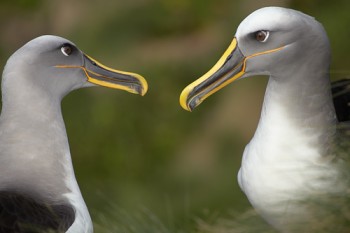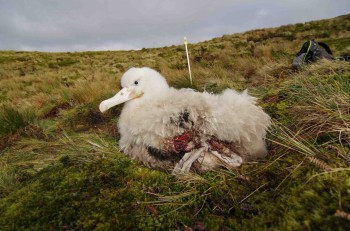Spatially Explicit Fisheries Risk Assessment (SEFRA) is a method that has been developed in New Zealand for determining whether current levels of bycatch of seabird and mammal populations from marine fisheries constitute an unacceptable risk. SEFRA has now been the subject of an expert review.
The review report’s executive summary follows:
“Spatially Explicit Fisheries Risk Assessment (SEFRA) is a method that has been developed in New Zealand for determining whether current levels of fisheries bycatch impose unacceptable risks to seabird and mammal populations. It is designed to use sparse information and makes a clear distinction between the effects of uncertainty and management precaution. This document reports the conclusions of a review of SEFRA carried out in June 2017. The review process used draft documents describing the method and included two days of presentations from the main developers of SEFRA, given in an open meeting involving other interested parties. After deliberation, the Panel’s draft findings were presented back to the open meeting for discussion; however, this report is solely the work of the four independent Panel members.
Our main conclusion is that SEFRA is a high quality method. It has been carefully thought out and implemented. We consider it to be a very useful tool, and hope it will become more widely known and used. We have, however, identified some areas that might benefit from further work.
The core of SEFRA is a detailed Bayesian model. The model is a good representation of the main features of the system but many of its prior distributions rely on sparse data or information elicited from experts. We feel that these should be re-examined to check their appropriateness and effects on the results. The treatment of over dispersion also needs to be standardised, and the assumptions around the linearity of effects and non-selectivity of bycatch considered.
All the models use a fixed value, of 0.2, for the coefficient of variability of abundances resulting from environmental variability. That parameter value is important to the conclusions of the models and requires further investigation. For seabirds the effects of unavailability while nesting, and the inclusion of populations that nest outside New Zealand need consideration. Some thought about the potential for interactions between species would be useful. We would also like to see further simulation and sensitivity testing, with particular emphasis on model misspecification and the characteristics of marine mammal populations.
The approach defines “Risk Ratio” as its main measure of how well bycaught species can be expected to do in the long term. At a simple level, low values are considered to be good, and high ones bad. The intuitive threshold for acceptability is 1, but some of the flexibility of the approach comes from the ability to choose other reference values. We feel that additional work is needed on the interpretation of differences from reference values (for example: how much worse, given a reference of 1, is 1.4 than 1.2?), and that alternative ways of communicating this information should be considered.
In general, we feel that the scientific component of SEFRA is well developed but may have got ahead of the wider management system it sits within. Even within the current implementations there are differences that suggest that communication between the developers has not always been perfect. It is important that both conservation and fisheries managers are included in future discussions to provide appropriate targets for species and ensure that the managers and other stakeholders understand the outputs and limitations of the method.”

Buller's Albatross - endemic to New Zealand; photograph by Jean-Claude Stahl
With thanks to Richard Phillips.
Reference:
Lonergan, M.E., Phillips, R.A., Thomson, R.B. & Zhou, S. 2017. Independent review of New Zealand’s Spatially Explicit Fisheries Risk Assessment approach – 2017. New Zealand Fisheries Science Review 2017/2. 36 pp.
John Cooper, ACAP Information Officer, 03 October 2017

 English
English  Français
Français  Español
Español 


